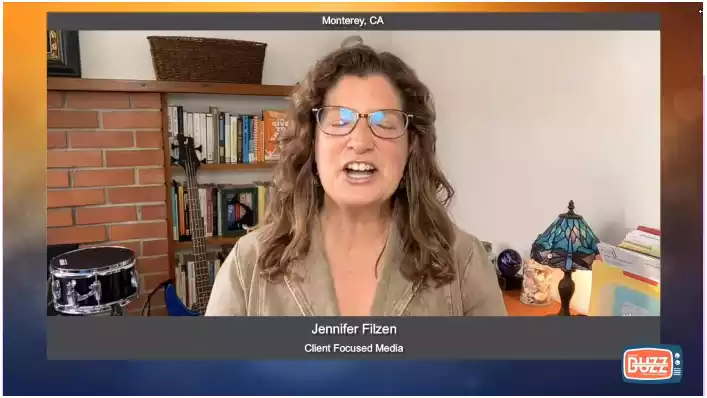Optimizing Healthcare Operations with Strategic Prior Authorization Plans
Unlock the potential of your healthcare operations with strategic prior authorization plans. Learn how to streamline workflows, reduce administrative burdens, and enhance patient care. Discover effective strategies for optimizing your practice today.

Imagine waiting in lengthy queues for assistance as a thing of the past, and support agents are liberated from monotonous inquiries. Understanding what prior authorization means for prescriptions is crucial in this evolving landscape. Prior authorization for prescriptions involves a process where healthcare providers must obtain approval from a patient’s insurance company before the prescription can be filled. This step ensures that the prescribed medication is covered under the patient’s insurance plan and is deemed medically necessary, thereby preventing unexpected costs and treatment delays.
Let’s start exploring!
Table of Contents
Healthcare Operations with Strategic Prior Authorization Plans
 In the changing world of healthcare, ensuring that operations are optimized is vital for delivering care effectively. A key focus has been on prior authorization (PA) plans, which are crucial in managing healthcare services’ costs, utilization, and quality. These plans require approval from health insurers before procedures, medications, or treatments can be administered to patients. This article explores how authorization plans can enhance healthcare operations, discussing their advantages, obstacles, and recommended approaches.
In the changing world of healthcare, ensuring that operations are optimized is vital for delivering care effectively. A key focus has been on prior authorization (PA) plans, which are crucial in managing healthcare services’ costs, utilization, and quality. These plans require approval from health insurers before procedures, medications, or treatments can be administered to patients. This article explores how authorization plans can enhance healthcare operations, discussing their advantages, obstacles, and recommended approaches.
Exploring Prior Authorization
Prior authorization is a method used by health insurance companies to ensure that healthcare services, treatments, or medications are medically necessary and comply with established guidelines. It involves a review process in which healthcare providers need approval from insurers before delivering the service. This process aims to control expenses, avoid treatments, and support evidence-based medicine.
The Significance of Strategic Prior Authorization Plans
Strategic prior authorization plans are crucial for striking a balance between cost management and providing high-quality care. By implementing these plans, healthcare organizations can achieve objectives:
- Managing Costs: Prior authorization plays a role in cutting down on costs by approving only essential medical procedures and treatments. This practice helps manage healthcare expenses for providers and patients.
- Ensuring Quality: These protocols guarantee that patients receive evidence-based treatments, thus enhancing the standard of care.
- Controlled Usage: Requiring approval for services through authorization helps prevent excessive use and misuse of healthcare resources.
- Regulatory Compliance: Prior authorization plans assist healthcare providers in adhering to insurance policies and regulatory standards, reducing the chances of fraud and misuse.
Advantages of Improving Healthcare Operations with Prior Authorization
- Better Patient Results: Prior authorization contributes to better patient outcomes and overall well-being by approving evidence-based treatments.
- Optimized Resource Allocation: designed prior authorization strategies to ensure the allocation of healthcare resources are utilized effectively for their intended purposes.
- Cost Efficiency: Reducing procedures leads to cost savings for healthcare providers and patients, making healthcare more affordable and sustainable.
- Reduced Administrative Burden: Streamlined prior authorization processes lighten the load on healthcare providers, allowing them to prioritize care.
- Enhanced Collaboration Between Providers and Insurers: Establishing authorization strategies can improve communication and teamwork between healthcare providers and insurers, resulting in more efficient and cohesive patient care.
Challenges in Executing Prior Authorization Strategies
Despite the advantages they offer, implementing authorization strategies comes with its set of obstacles:
- Administrative Complexity: Securing prior authorizations involves a time-consuming process that necessitates documentation and communication between providers and insurers.
- Treatment Delays: Lengthy authorization procedures can cause treatment delays, potentially affecting outcomes and satisfaction levels.
- Provider Discontent: Healthcare providers frequently express frustration over the workload and perceive a lack of autonomy associated with prior authorization mandates.
- Patient Uncertainty: Patients may feel confused or frustrated by the authorization process, especially when faced with delays or denials, which can lead to dissatisfaction and erode trust in the healthcare system.
- Diverse Requirements: Different insurers may have authorization requirements, making it challenging for providers to navigate the process effectively.
Effective Strategies for Successful Prior Authorization

To address these challenges and enhance healthcare efficiency through authorizations, several practical strategies can be implemented:
- Simplifying Processes: Standardizing and streamlining the authorization process can reduce burdens and speed up approval processes. Leveraging technology, such as authorization (ePA) systems, can boost efficiency and accuracy in the authorization process. To minimize confusion and enhance compliance, detailed information regarding authorization requirements must be provided to both healthcare providers and patients. Encouraging teamwork and open communication between healthcare providers and insurers can result in timely authorizations.
- Monitor the authorization process regularly: Gather feedback from providers and patients to help pinpoint areas for enhancement and ensure ongoing optimization. The collaborative effort resulted in increased effectiveness, savings, and improved patient outcomes.
I'm very thankful for Portiva who I know is looking after my practice while I'm gone the virtual assistants can manage prescription refills, documents they can triage patients and just kind of answer administrative questions and they can handle a lot on their own. But also, they're very good about contacting me if there's any emergency or anything I need to attend to. So I'm very thankful for Portiva they can help almost any provider almost anywhere and it really allows for some good work-life balance as I'm getting to experience right now at my family farm so I'm very thankful for Portiva and I'm very happy to use their services"

Board Certified Family Medicine Physician

Portiva's Virtual Medical Assistant - I have all the support I need. There's somebody checking my email, any patient messages. Patients are still able to schedule and handle any scheduling issues and any kind of billing that needs to still go through. Portiva hands handles it all for me. I have support i have somebody that I can access 24/7 pretty much. It's all very seamless. If somebody has an emergency or needs a medication called in. I know that the va's at portiva will handle that for me.

Board Certified Family Medicine Physician

Case Studies: Successful Prior Authorization Strategies
 Case Study 1: Implementing Electronic Prior Authorization
Case Study 1: Implementing Electronic Prior Authorization
A large healthcare organization implemented an electronic prior authorization (ePA) system to streamline the authorization process. By integrating the ePA system with their electronic health record (EHR) system, the organization was able to automate documentation submission and improve communication with insurers. The result was a significant reduction in approval times, decreased administrative burden for providers, and enhanced patient satisfaction.
Case Study 2: Collaborative Care Model
In another case, a healthcare provider collaborated with a major insurer to develop a prior authorization plan that focused on high-cost and high-utilization services. By working together, they established clear guidelines and criteria for approvals, reducing unnecessary denials and delays. This collaborative approach led to improved efficiency, cost savings, and better patient outcomes.
Case Study 3: Training Program for Healthcare Providers
A healthcare system introduced a program to educate providers on the requirements and guidelines for authorizations. They equipped providers to navigate the authorization process through training sessions and resources. This initiative led to rejections, quicker approvals, and higher provider satisfaction.
In Summary
Enhancing healthcare operations through planned authorization strategies is crucial for controlling costs, ensuring quality care, and optimizing resource utilization. By grasping the significance of authorizations, understanding their advantages and obstacles, and implementing practices, healthcare institutions can elevate patient outcomes, decrease administrative complexities, and strengthen collaboration between providers and insurers. As the healthcare industry advances, effective prior authorization strategies will play a role in sustaining delivery systems.
To learn more about insurance approval that can enhance your medical practice. Discover more about Portiva and unlock a world of possibilities by visiting our homepage today!
- Preventing prior authorization mistakes
- Key strategies for improving prior authorizations
- Significance of quality assurance in prior authorization
- Examining prior authorization’s role in healthcare accessibility
- How prior authorization affects patient access to healthcare
- Enhancing communication in prior authorization processes
- Mastering compliance in prior authorization
- Systemic efficiency in prior authorization
- Multidisciplinary strategies for prior authorization
- Impediments for prior authorization
- Customizing prior authorization processes
- Education and support in prior authorization
- Effective communication in prior authorization
- Streamlining healthcare with electronic prior authorization
- Understanding patient rights in prior authorization
- Prior authorization regulatory compliance
- Financial strain of prior authorization on medical practices
- Comprehensive provider training in prior authorization
- Hidden costs of prior authorization

